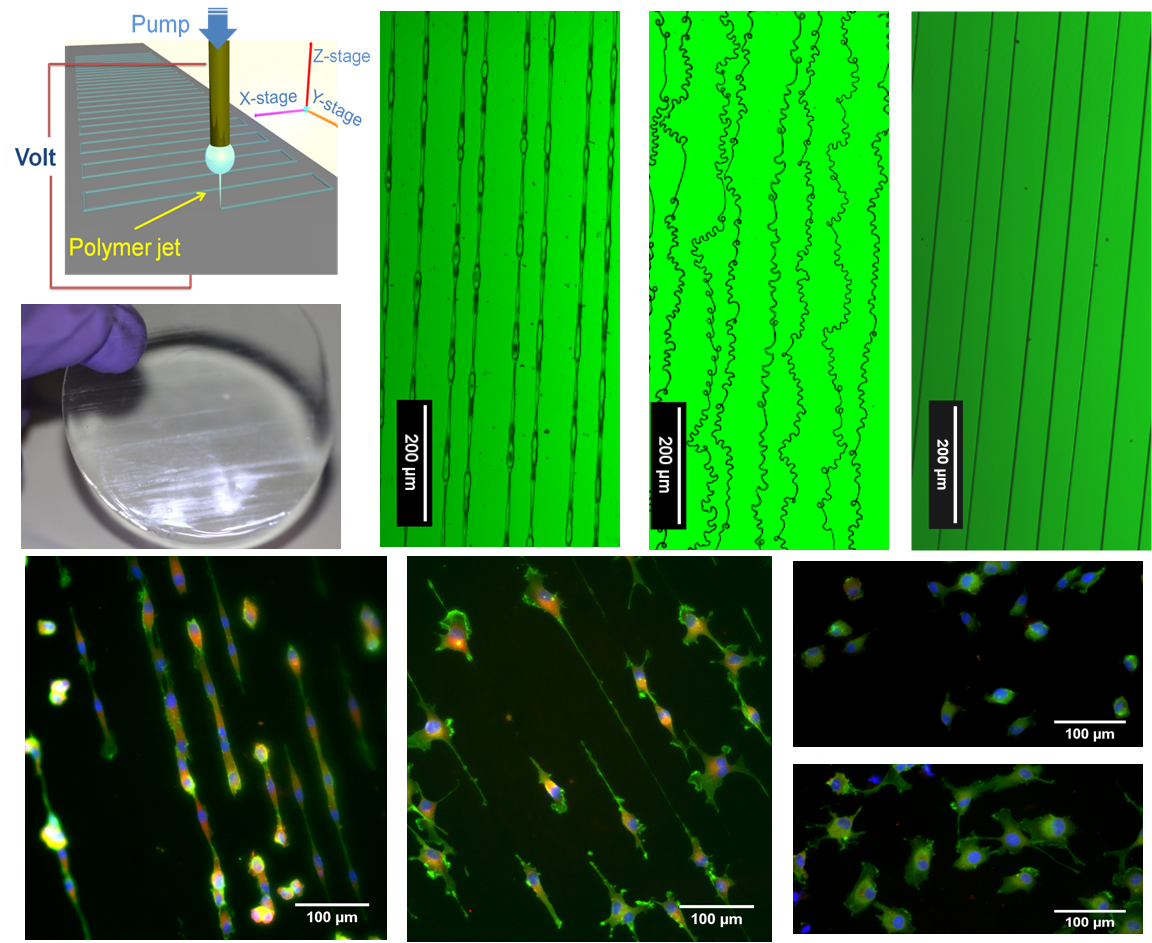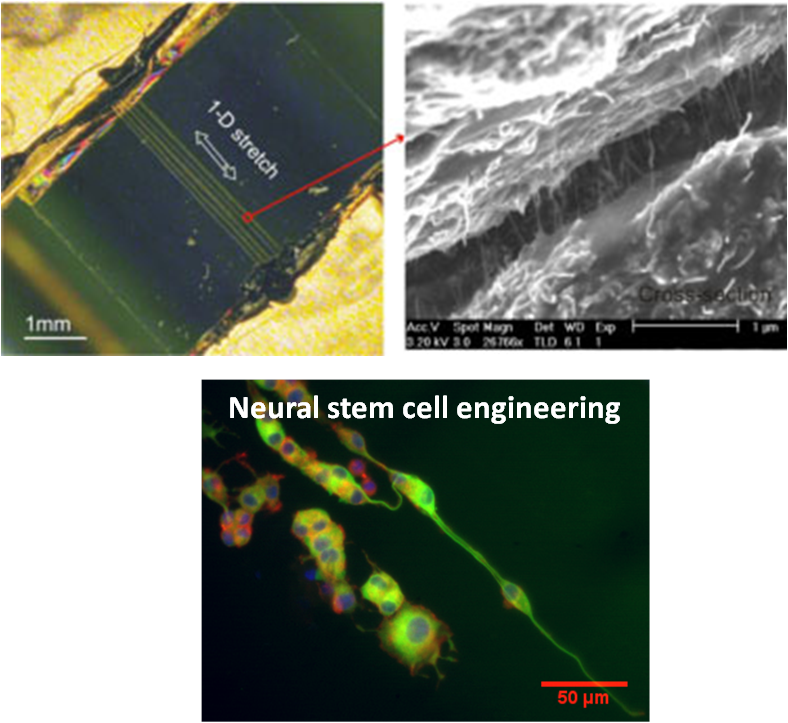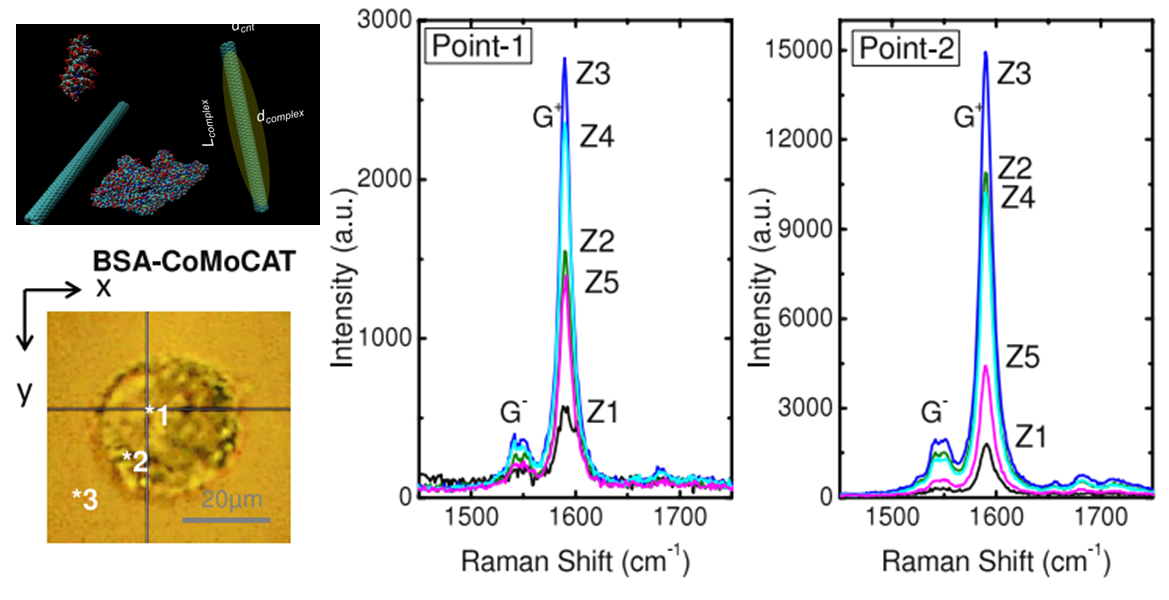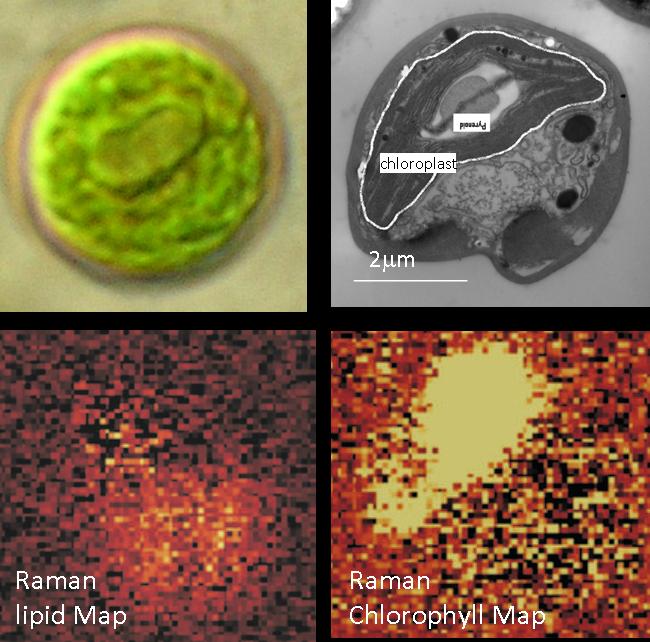Yan Yan Shery Huang
Research
Please visit my new website at Department of Engineering.

Biofabrication for cell patterning, tissue scaffolds and bioelectronics
We are developing a room temperature, low energy cost, low waste, direct-write technology to pattern bioactive, biocompatible fibrils. Ultimately, the biomimetic construct will provide the building blocks for tissue regeneration. The development of this biofabrication technology will require in-depth understanding of the electrodyanmics of jet formation, precision instrumentation, and innovative materials processing.
Organ-on-chips as pathology models
 This research area focuses on developing models to recapitulate the micro-environments for living cells and tissues in vitro. Specifically, we apply our materials approach to study the motility of cancer cells when they interact with a vessel formed by endothelium cells, to mimic the conditions of cancer metastasis.
This research area focuses on developing models to recapitulate the micro-environments for living cells and tissues in vitro. Specifically, we apply our materials approach to study the motility of cancer cells when they interact with a vessel formed by endothelium cells, to mimic the conditions of cancer metastasis.
Soft tissue engineering
 Mechanical stiffness and texture of the interfacing substrate play critical roles in the process of cell differentiation/ growth and tissue regeneration. Combining nanomaterials and new fabrication techniques, material interfaces mimicking biological tissue environments can be fabricated. These soft electronic systems will see a wide range of applications where electrical stimuli are required to deliver to the cellular system, a good example being the brain electrode. The project is hoped to bring further understanding in how the change in different physical environments (such as stiffness, electrical stimuli, surface roughness and anisotropy) will affect the differentiation/ growth of stem cells. The results also hold the key to optimise the material microstructure for bioelectronic applications.
Mechanical stiffness and texture of the interfacing substrate play critical roles in the process of cell differentiation/ growth and tissue regeneration. Combining nanomaterials and new fabrication techniques, material interfaces mimicking biological tissue environments can be fabricated. These soft electronic systems will see a wide range of applications where electrical stimuli are required to deliver to the cellular system, a good example being the brain electrode. The project is hoped to bring further understanding in how the change in different physical environments (such as stiffness, electrical stimuli, surface roughness and anisotropy) will affect the differentiation/ growth of stem cells. The results also hold the key to optimise the material microstructure for bioelectronic applications.
Molecular nanotechnology
 Single-walled carbon nanotubes (SWNTs) demonstrate rich optical response which varies with their surrounding environments. With their small and needle-like physical size (1nm in diameter, and micron in length), they are able to gain access into different narrow channels or cellular compartments with ease. The above two attributes of SWNTs make them ideal probes for chemical substances in microfluidics devices such as lab-on-chip, or in biological cells (typically 10s of micron in size).
Single-walled carbon nanotubes (SWNTs) demonstrate rich optical response which varies with their surrounding environments. With their small and needle-like physical size (1nm in diameter, and micron in length), they are able to gain access into different narrow channels or cellular compartments with ease. The above two attributes of SWNTs make them ideal probes for chemical substances in microfluidics devices such as lab-on-chip, or in biological cells (typically 10s of micron in size).
Raman Spectroscopy of Living Photosynthetic Organisms
 To date, analysis of algae composition is a multi-staged process. At the beginning, each cell component is isolated by centrifugation and solubilization. These purified extracts are subsequently analyzed by techniques such as mass spectroscopy and high-pressure liquid chromatography (HPLC) to determine their chemical formula and their relative abundance These procedures destruct the integrity of algal cells, and can be slow, tedious and require a substantial amount of algae. Due to the growing emphasis on the large-scale production of algae for fuels and chemicals, a fast composition analysis technique is needed. Rapid composition analysis, potentially using
Stokes Raman scattering, would greatly facilitate the selection of suitable strains and their associated growth conditions for different applications, ranging from biofuels to nutritional supplements.
To date, analysis of algae composition is a multi-staged process. At the beginning, each cell component is isolated by centrifugation and solubilization. These purified extracts are subsequently analyzed by techniques such as mass spectroscopy and high-pressure liquid chromatography (HPLC) to determine their chemical formula and their relative abundance These procedures destruct the integrity of algal cells, and can be slow, tedious and require a substantial amount of algae. Due to the growing emphasis on the large-scale production of algae for fuels and chemicals, a fast composition analysis technique is needed. Rapid composition analysis, potentially using
Stokes Raman scattering, would greatly facilitate the selection of suitable strains and their associated growth conditions for different applications, ranging from biofuels to nutritional supplements.
- © 2011 BSS
Information provided by webmaster@bss.phy.cam.ac.uk - Privacy
